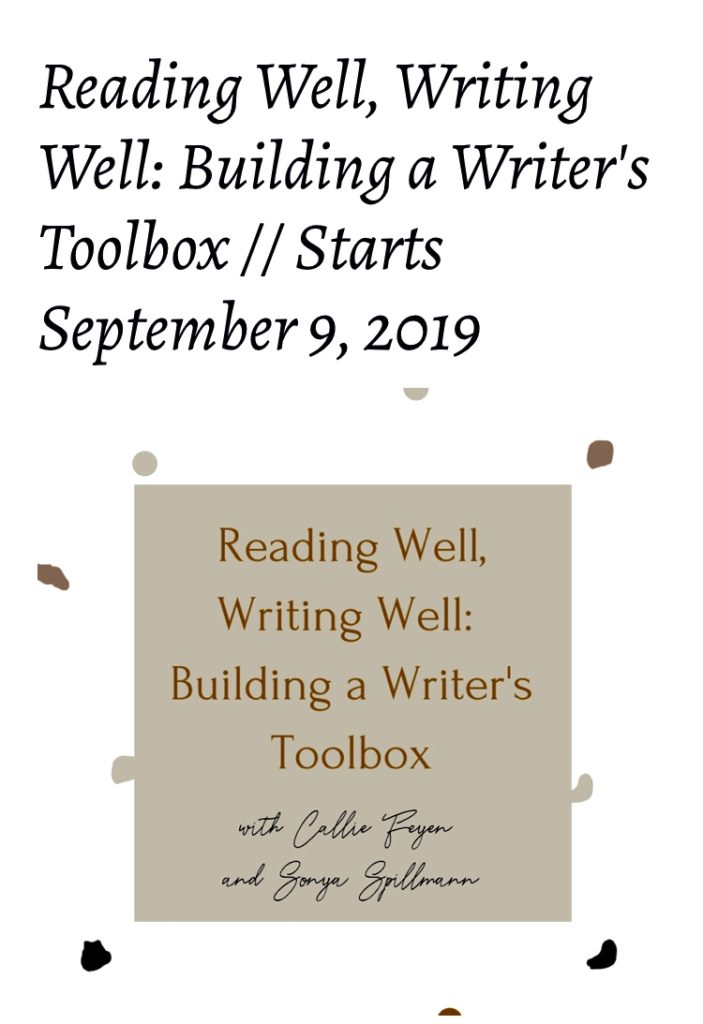My lovely and hilarious friend Sonya and I are excited to announce we are teaching a workshop called Reading Well + Writing Well: Building a Writer’s Toolbox beginning in September. Sonya and I designed a 10-week course based on the belief that reading well helps us write well. Each week, we will give both a reading and a writing assignment (one to study, one to practice), and participants will keep a reading journal as well as write one essay using the concepts introduced throughout the course. Details here.
Following is a sneak peek into a lesson on setting. A quick note – I left the job I’m referring to in this piece, but I chose to keep it in the present tense because I think it holds more urgency this way, but also, what I express about the environment is still true, and I want to remember it that way.
//
I’m pretty sure I’ve been listening to – and enjoying – elevator music in the schools where I work. It’s been going on for a while. Like, two years.
I found the music on YouTube on an afternoon I was cataloguing books and wanted to listen to music while I worked. I typed in Miles Davis, and found his album, “Kind of Blue” – a favorite of mine – and listened to that, but along the side bar were suggestions for more music I might like, all of them with pictures of coffee mugs filled to the brim and boasting beautiful foam art. “Books and Coffee” is what this genre of music is titled, and so I clicked on them because other than the words, “love,” and “gummy bears,” I’m not sure there are two words I adore more.
It is the easiest of listening, this music. Every day, I tell myself I’m not going to listen to it; that I’ll find John Coltrane, Herbie Hancock, Dave Brubeck, but then I hear a student slam a door, or another screams, or growls, or yells so loud I think of volcanoes erupting – no intentions to spill lava that day, but what’s inside is hot and bubbling, and at some point that heat must escape. It must go somewhere, oozing over everything so it’s never the same again.
I cannot listen to complicated melodies and music that makes me feel too deeply while I’m at work. I am holding too many stories – the ones with pages and the ones with heartbeats. Some I can organize and protect: assign a barcode, stick library tape over it that fits perfectly on the book, order the books alphabetically and straight, spines standing at attention and ready. Others are not so easy to maintain. Others I cannot protect, and the only thing to do is turn the page, or wait while a student turns the page, each of us holding a piece of the story hoping it’ll turn out OK but promising that no matter what, we will stay until the story ends.
The simple, superficial music is not so much a balm as it is a numbing cream. Because I’m not sure what to do when I breathe the library’s air for the first time in the morning and feel a settled joy so strong something I cannot name solidifies within me. I am not sure what to do when a boy throws crayons, chairs – his shoes – because there are no more shark books for him to check out and he is raging because something he depended on is not here. I don’t know what to do when a simple song like, “Down by the Bay,” becomes a complicated set of beats – clapping and stomping, and “Oh, hey! Hey! Heys!” and we are all standing and wiggling our hips, and nodding our heads to such a ridiculous song – all of us boiling with some kind of haunted, stubborn hope and knowing when it bursts out, everything will change, and we’ll never be the same again.
//
For this piece, I tried to do what Mary Karr suggests about setting in her book, The Art of Memoir. Setting should “help the story along.” It should “reveal something.”
So, I used the books in the library to reveal my need for order in a very disorganized and emotional situation. I tried to use what goes on in the library – reading books, finding and not finding books, cataloguing books, and singing, in order to move the story along.
Finally, the elevator music is a metaphor for my trying to create a setting that’s easy rather than dealing with the setting that is. Through place, I tried to relay the tension, hope, and despair I feel throughout my work day.
This week, as you read, pay attention to setting. Ask:
- What does the setting evoke?
- What does the setting reveal?
- How does setting move the story forward?
//
Details about the course, here.
If you want to learn more about Sonya and her writing chops, a favorite of her essays lives here. And, here is Sonya in all her red lipstick, story-telling glory on the day we first met and I knew we would become the bestest of friends.


Taking this course is probably not a reality for me right now, I’ve got my 4th baby due this next week and it’s been an undoubtedly expensive year. But oh man. Talk about something I will dream about doing. Your essays and Sonya’s have long been my favorites on the C+C blog and to combine a workshop of reading and writing sounds so incredible. Thank you for the gift of your writing that you share and know that I treasure many of your words and stories. Thank you.
What kind words, Ariana. Thank you. I will let Sonya know as well.
And we will be teaching this course again, so perhaps you can join us in the future.